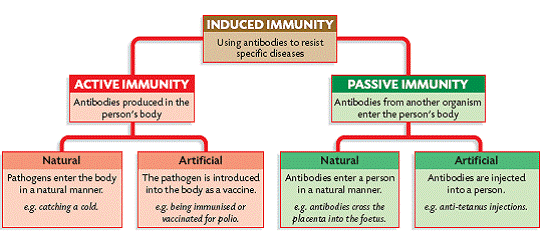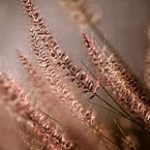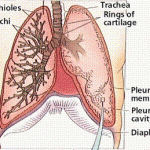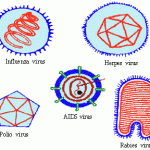Contents
We are constantly under attack by bacteria, fungi, viruses and other organisms. These invaders are called pathogens. Our body is a rich source of nutrients and water that these invaders need to survive. Amazingly we remain healthy most of the time. We are obviously very good at protecting ourselves. There are two major aspects to our defence system – general and specific.
General Defence System
The first parts of the general defence system are really barriers that stop the pathogens from entering the body. These barriers try to stop all pathogens therefore they are considered non-specific defences. The physical barriers of our general defence system consist of:
· The Skin- This was discussed in the excretion web page. It is a physical barrier that stops pathogens.
· Clotting- If the skin is broken the blood clot stops entry of pathogens.
· Sebaceous and sweat glands- These produce chemicals that kill bacteria.
· Lysozyme- This is in the saliva and the tear glands. It kills bacteria.
· Mucous membranes- These secrete mucus which lines many body parts. The mucous traps pathogens and prevents them from entering the body.
· Nasal hairs- These remove suspended micro-organisms from the air.
· Cilia- These small hairs beat to force mucus to the pharynx for swallowing to the stomach. Coughing helps in this process.
· Hydrochloric acid- This is found in the stomach. It kills micro-organisms.
· The vagina- It contains bacteria that produce lactic acid that prevents the growth of pathogens. Also the vagina has a low pH to kill bacteria as well as mucous membranes.
If pathogens do get past the physical barriers our second line of defence takes over. This is our general defence system.
The major components of the general defence system are:
1. Phagocytes- These are white blood cells that engulf pathogens. They ingest the pathogen in the same way as the Amoeba eats. These were discussed in the blood web page.

2. Macrophages- These are large, longer living phagocytes. Some move around the body and act as scavengers while others remain in a fixed place. There are many that are present in our lymph system.
3. Complement Defence Proteins- These are substances produced by other protein or in response to the presence of foreign material in the body and that triggers or participates in a complement reaction. This is a reaction to the presence of a foreign microorganism in which a series of enzymatic reactions, triggered by molecular features of the microorganism, result in the bursting or engulfing of the pathogen.
4. Interferons- These are defence proteins that are produced by body cells that are infected by a virus. They travel to nearby cells and prevent the spread of the virus.
5. Inflammation- Cells that have been infected produce chemical called histamine. This chemical causes the blood capillaries to dilate (get wider) and become more porous. As a result the area swells, gets red, becomes warm, and is painful. This results in more white blood cells coming to the area to fight the infection. If the inflammation happens over the whole body we get a fever. The fever is the body’s way to combat bacteria and viruses. The higher temperature inhibits the pathogen from reproducing.
Specific Defence System
This defence system is called the specific defence system because the system attacks specific invaders. This can happen by the production of antibodies or by white blood cells engulfing a particular pathogen.
1. White Blood Cells- Lymphocytes and monocytes are produced in the bone marrow. They then are transported by the blood to lymph vessels, lymph nodes, the spleen or the thymus gland.
a. Monocytes- These are white blood cells that become macrophages. These are large white blood cells. They engulf invaders. Once engulfed part of the invader remains on the surface of the microphage. This is called an antigen. Antibodies are produced to fight off future invaders.
b. Lymphocytes- Some attack body cells that have antigens (parts of the invader) on their surface. Other lymphocytes produce antibodies.
2. Antibodies- Lymphocytes produce antibodies as a result of antigens. These are proteins in the group called immunoglobulins. Each antigen will only stimulate the production of one specific antibody that will fit into its receptor area. This is called natural active induced immunity. It is protection gained against a particular pathogen by the production of specific antibodies after the antigen on the pathogen has been detected.


These antibodies act in numerous ways:
a. Some bind to the antigens on the surface on the pathogens. This prevents the pathogen from entering the host cell.
b. Others cause the pathogens to clump together. Phagocytes then engulf the clumped pathogens.
c. Some antibodies activate the complement system which then acts to burst the pathogen.

This antibody protection remains in our bodies. When the same pathogen invades the antibodies are quickly produced because some of the lymphocytes from the previous invasion are still present.
We may get various types of ailments although they may appear to be the same ailment as a previous one. That is because there are different forms of the same ailment. An example is colds. Different pathogens may produce colds. When that occurs our body must produce new antibodies to attach to those specific antigens.
Sometimes our antibody system works against us. In this case the body produces antibodies against itself! These conditions are called autoimmune diseases. Rheumatoid arthritis and multiple sclerosis are 2 examples.
Sometimes our bodies produce antibodies against non-invaders. For some reason the body perceives a harmless substance to be an invader. As a result allergies arise to particular substances.
3. Artificial active immunity contrasts with natural active immunity. In this type of immunity the person is inoculated with a non-diseasing causing part of the pathogen. (either a part of the pathogen or a dead pathogen) This will carry the antigen that will trigger the production of antibodies. This is called a vaccination. Genetic engineering is now producing antigens that can be inoculated into people. The antibodies form without any risk to the person.
Types of Vaccines
1. Preparation of the dead pathogen.
2. Preparation of the live but weakened pathogen (cannot reproduce).
3. Preparation of a close but relatively harmless relative of the pathogen.
4. Preparation of parts of the pathogen that carry the antigen.
The first vaccine was produced by Edward Jenner in 1796. He discovered a vaccine that produced antibodies against smallpox.
4. Natural Passive Immunity occurs when a child gets antibodies from the mother either before it is born or in the mother’s milk. This type of immunity only lasts a few months.
5. Artificial Passive Immunity occurs when a person is injected with antibodies made by another organism. A tetanus shot is an example. The antibodies are gotten from horses. This immunity lasts only a short time.

TYPES OF LYMPHOCYTES- HIGHER LEVEL DISCUSSION
Lymphocytes are either B-cells or T-cells depending on where the cells matured. B-cells mature in the bone marrow while T-Cells mature in the Thymus gland.
1. B-cells- B-cells work in the lymphatic system especially the spleen and lymph nodes. Each B-cell works on 1 specific antigen therefore produces only 1 type of antibody to that specific antigen. A B-cell will come into contact with the antigen and then reproduce rapidly. These rapidly produced cells are called plasma cells. These last only a few days but are extremely effective.

Most of these B-cells die within a few days but others remain alive. They are called Memory B-cells. When the same antigen becomes present in the organism these memory B-cells are already there to begin the production of plasma cells and antibodies. This is called a secondary B-cell response. This is more effective than the original B-cell response for the following reasons:
a. The antibodies are produced to a smaller amount of antigen.
b. The antibodies are produced much faster.
c. More antibodies are produced than in the original response.
2. T-cells- These defenders are produced in the bone marrow but become activated in the thymus gland. These cells do not produce antibodies but protect us in the following ways:
a. Helper T-cells: They recognise antigens on the surface of other white blood cells, especially macrophages. The Helper T-cells enlarge, multiply, and form a group of Helper T-cells. This group will produce chemicals including interferon and also stimulate the formation of B-cells. They also stimulate the reproduction of Killer T-cells.

b. Killer T-cells: These cells destroy abnormal body cells such as virus-infected cells and cancer cells. As stated previously, they are stimulated by Helper T-cells. These cells release a protein called perforin. These proteins form pores in the membranes of the cells they attack. Water and ions from the surroundings flow into the cells and burst them. This is called lysis.

c. Suppressor T-cells: As the same suggests, these cells suppress or inhibit from working after the pathogen has been destroyed.
d. Memory T-cells: Many of these cells survive for life. They stimulate Memory B-cells to produce antibodies. Others stimulate the production of Killer T-cells. Both of these “memory cells” are responsible for lifelong immunity.








